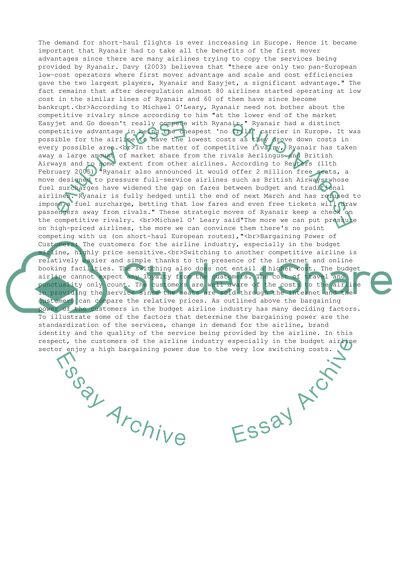Cite this document
(Budget Airline Sector Case Study Example | Topics and Well Written Essays - 2250 words, n.d.)
Budget Airline Sector Case Study Example | Topics and Well Written Essays - 2250 words. Retrieved from https://studentshare.org/management/1527551-strategic-management-of-ryanair
Budget Airline Sector Case Study Example | Topics and Well Written Essays - 2250 words. Retrieved from https://studentshare.org/management/1527551-strategic-management-of-ryanair
(Budget Airline Sector Case Study Example | Topics and Well Written Essays - 2250 Words)
Budget Airline Sector Case Study Example | Topics and Well Written Essays - 2250 Words. https://studentshare.org/management/1527551-strategic-management-of-ryanair.
Budget Airline Sector Case Study Example | Topics and Well Written Essays - 2250 Words. https://studentshare.org/management/1527551-strategic-management-of-ryanair.
“Budget Airline Sector Case Study Example | Topics and Well Written Essays - 2250 Words”, n.d. https://studentshare.org/management/1527551-strategic-management-of-ryanair.


